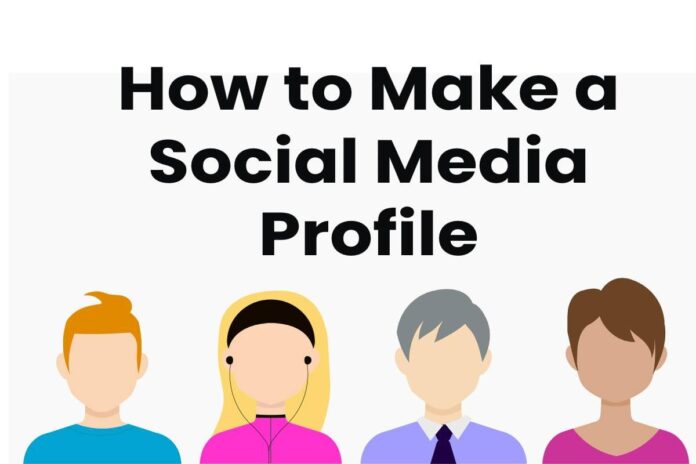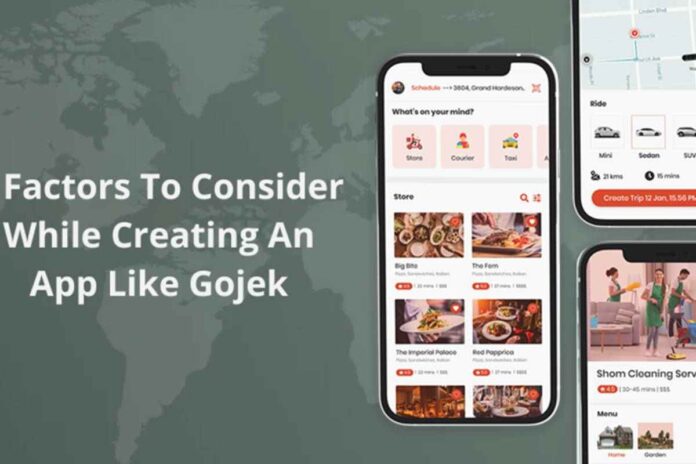The growth in mobile browsing shows the necessity of mobile website testing. To reach a wider audience and maintain a competitive edge, websites must be easy to use and deliver a seamless and effective user experience on mobile devices. Mobile website testing differs from desktop website testing. Furthermore, various difficulties arise because of variations in screen size, quality, and technology between mobile devices.
Android and iOS being the dominant mobile operating systems, which are constantly evolving with new versions, make testing increasingly difficult. To provide consistent user experiences across all platforms, comprehensive testing is required, as these variations can have significant impacts on how a mobile website performs and displays.
This article will highlight excellent mobile website testing approaches. In addition, it will discuss best practices and benefits that may assist developers and testers in creating strong, user-friendly, and adaptive mobile websites for modern mobile users.
Table of Contents
What is mobile website testing?
Mobile website testing is a method to determine a website on a mobile device to verify if it is accessible and functional. This involves examining the page for errors, inconsistencies, and any issues with navigation, user interactions, page design, and overall functioning.
This testing takes place on a number of devices, including smartphones, tablets, laptops, and even feature phones. It can also be performed on certain web browsers or operating systems which involves looking through its functional and non-functional components.
Mobile website testing is an important aspect of identifying issues and ensuring their early resolution. This improves user experience and reduces the possibility of negative reviews, revenue loss, and website abandonment. To make sure that mobile websites are high-quality and satisfy user expectations, developers must give testing top priority.
Types of Testing for Mobile Websites
Security testing
This testing checks a website for vulnerabilities such as incorrect session management, authentication problems, and unsafe data transmission or storage. Make sure the website complies with security regulations such as GDPR and that sensitive data is secured.
Usability testing
This evaluates the mobile website’s user experience. End users often demand a visually appealing and straightforward layout, rapid response times, and smooth navigation. This will usually consist of testing mobile websites with actual groups of end users.
Functional testing
This testing ensures that all of the site’s essential functionality, such as registration forms, menus, buttons, payment gateways, and authentication processes, work seamlessly. Test a variety of real-world situations, such as ordering something or logging in using a social media account, etc.
Performance testing
Mobile users frequently encounter fluctuating network conditions. Conducting performance testing allows testers to test the speed and responsiveness of the website under various conditions, such as low bandwidth, slow internet connections, and high traffic. It measures page load times and optimizes resource utilization.
Geolocation testing
Testing GPS functionality in various locations is essential because a lot of mobile websites depend on location-based services. Simulate multiple locations to confirm that the website properly handles geolocation permissions and provides relevant content.
Cross-browser testing
Mobile web users browse websites using a variety of browsers, including Chrome, Safari, Firefox, and Edge. Cross-browser testing guarantees that the website appears and performs properly across all major browsers.
LambdaTest is a reliable cloud-based option for those looking to improve their cross-browser testing procedures. This platform provides extensive testing environments that support a wide range of browsers and operating systems, as well as automated testing capabilities. Testers can access this scalable and reliable testing infrastructure from anywhere.
LambdaTest is an AI-powered platform for test orchestration and execution that allows for the large-scale execution of both automated and manual tests. The platform offers a complete cloud-based infrastructure for automating cross-browser testing. With this platform, testers can perform real-time and automation testing across more than 3000 scenarios and real mobile devices. Additionally, Lambdatest offers responsive testing, visual testing, geolocation testing, and screenshot testing features, providing a seamless testing experience.
Furthermore, testers can also perform Selenium mobile testing on real mobile devices hosted on the cloud, assisting testers in improving the application quality for optimal performance and user satisfaction. A further unique feature of the platform is its one-click bug tracking feature, which enables testers to quickly report issues using a variety of bug management tools, like Jira, Asana, Trello, Github, TeamWork, Hive, and many more.
Why is testing mobile websites important for testers
Mobile web testing is necessary because of the various methods by which users access content across different browsers and devices. With varied screen resolutions across browsers, optimizing websites for smooth functioning becomes critical to retaining potential users. Mobile testing assures website responsiveness across many devices, which offers several benefits such as:
Increasing Mobile Use- Mobile devices and PCs are currently responsible for a large portion of global internet traffic. To acquire this vast audience, developers must have websites that are compatible with mobile devices.
Enhanced User Experience
Mobile-friendly websites offer a better user experience than desktops, increasing trust and engagement. Testers can ensure that their websites are appealing and functioning across all mobile platforms through device-specific responsive testing.
Better Search Engine Ranking
Mobile-optimized websites score higher rankings in Google and other search engine results. Mobile website testing increases SEO and exposure by adhering to mobile optimization guidelines.
Better Security
Testing mobile websites can identify security flaws that might put user data at risk. By resolving these issues, users can experience more confidence knowing that their data is protected on the website.
Bounce Rates Drop
When users encounter problems with navigation or functioning, they abandon websites that are not mobile-friendly. By lowering bounce rates and maintaining user engagement, mobile testing helps in dealing with these issues.
Rapid technological evolution
Due to the rapid advancement of mobile technology, new devices, operating systems, and browsers keep coming. Developers can remain ahead of the curve and provide a flawless experience regardless of the device’s age or specifications by performing regular mobile testing.
Methods for Mobile Website Testing
Mobile website testing can be challenging, but it can be made much simpler with the right strategy. Here are a few methods for testing the mobile website:
Testing on real devices
Without testing the website’s performance on real devices, no mobile website testing plan is complete. Testers can simulate real-world conditions like intermittent Internet and limited battery life and find exactly how the website performs by using an actual device. Additionally, they can see how it works with device hardware like cameras, touch displays, and GPS. This method guarantees that testers find user environment-specific problems before launching the website.
Testing on Chrome DevTools
This toolkit enables testers to simulate numerous mobile devices and screen resolutions to evaluate how the website performs on each of them. Testers can select from a list of devices, manually customize the dimensions, modify the zooming settings, and replicate geolocation or network circumstances.
Using test automation tools
Automation tools allow testers to automate tests across numerous devices and are the fastest and most scalable way to test mobile websites, particularly if they need to shorten their time to release. Setting clear testing goals, selecting the right framework, and developing appropriate test scripts can help testers speed up regression testing, especially when executing the same test cases on various devices, and operating system combinations.
Testing on emulators and simulators
Android and iOS simulators are a useful and affordable approach to finding UI and UX flaws and testing for mobile website accessibility, even if they focus mostly on native application testing.
Although these tools can help testers identify both functional and visual flaws, they might not accurately simulate real-world situations like battery life, hardware performance, or specific network problems. They work well for initial evaluations, but for an overall illustration, real device testing should be included.
Challenges in mobile website testing
Here are some issues that could occur while testing mobile websites:
- Various mobile devices have different screen sizes, operating systems, and hardware, making it challenging for testers to achieve comprehensive test coverage.
- Mobile websites need to function across different devices, OS, and browsers. Ensuring compatibility across various environments is a challenging task in mobile website testing.
- Mobile devices connect to the internet with cellular data, Wi-Fi, or Bluetooth. Network fluctuations can affect the performance of the website, causing delays in loading, connection problems, or potential crashes.
- Font size, color contrast, and navigation impact user experience and require detailed examination.
- Security is a major concern, especially if the website requires users to share personal information.
- Performance testing can be difficult because it requires identifying device-specific security vulnerabilities.
- Frequent system updates can cause compatibility issues that affect the app’s features.
Best Practices for Mobile Website Testing
Test with the end user in mind
A website’s success is determined by its ability to satisfy the expectations of its users. As a result, behavioral analytics should be used early to establish a feedback loop. This will assist in guaranteeing that the mobile website is in alignment with user demands, allowing testers to make changes based on real-time feedback.
Prioritize core functionality
Mobile websites are used for distinct objectives by users. Regardless of the design features, if the essential functionality such as navigation, sign-ups, or purchasing, don’t perform properly, users will quit. Make sure the testing plan puts these crucial features first to prevent interfering with the user experience.
Test early, test often.
Integrate test automation early in the process to detect issues as they emerge. Parallel testing across many devices and configurations ensures a fluid workflow without bottlenecks, allowing for continuous quality assurance. Using a combination of exploratory and automated testing is also essential. Testers should balance exploratory and script-based testing when testing mobile websites.
Script-based testing works well for figuring out functional problems and decoding faults. Exploratory testing, on the other hand, is essential to comprehending how users engage with the website and what special use conditions would need to be taken into account.
Define a device selection strategy.
Testers can’t test the website across all browser, device, and operating system combinations. Create a support policy for the platforms and devices they plan to test using end-user data. To make sure testers are serving as many end users as possible, review it regularly.
Optimize for page load speed.
Speed is critical for mobile users. To improve load times, compress images, minimize redirects, use browser caching, and reduce server response times. Regularly evaluate the mobile website’s performance under different network situations to keep load times as minimal as possible, resulting in enhancing user retention and experience.
Utilize a cloud service to test on more devices.
Testers can utilize emulators during development, but the website must finally be checked on real devices. It is not practicable to have a complete inventory of all mobile devices. Consider utilizing a cloud-based device management platform that allows the entire team to easily access a variety of devices and platform versions.
Conclusion
In conclusion, mobile devices have become an essential part of people’s daily routines. In the current era of digital growth, when web technology is in ongoing evolution, incorporating mobile website testing as a key component of developing a website guarantees that the website aligns with the users evolving demands.
For testers, having a mobile-responsive website with smooth user interaction is critical. This post provided insights into essential components of how to test websites on mobile devices, their importance, and the best practices for generating high-quality results. Knowing the different types and methods of mobile website testing saves both effort and time. It improves the user experience through realistic tactics which result in optimal outcomes.








